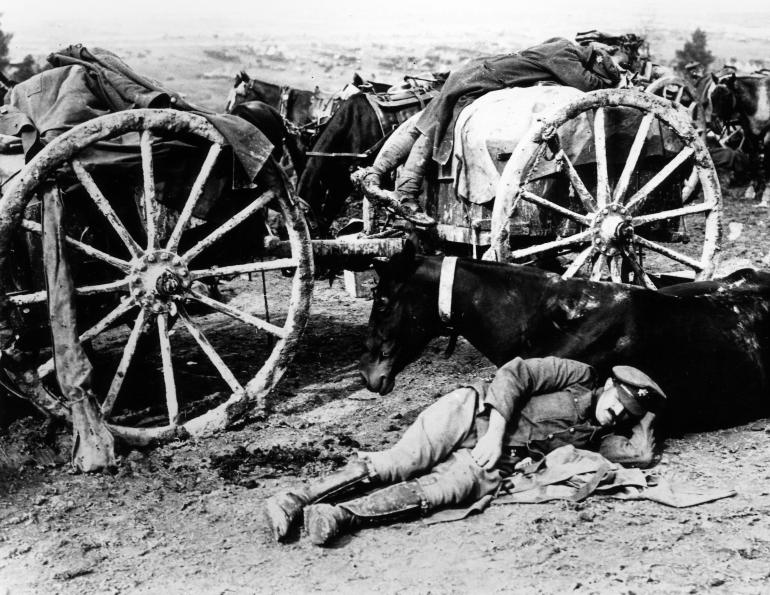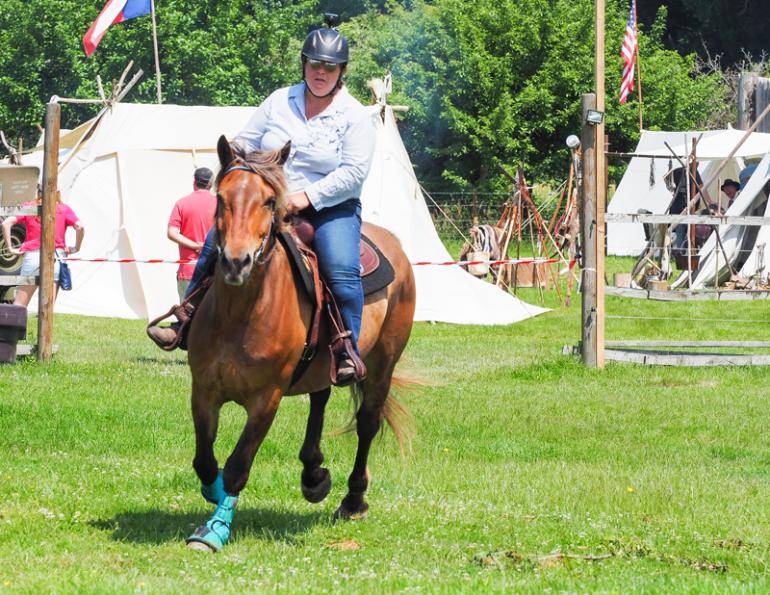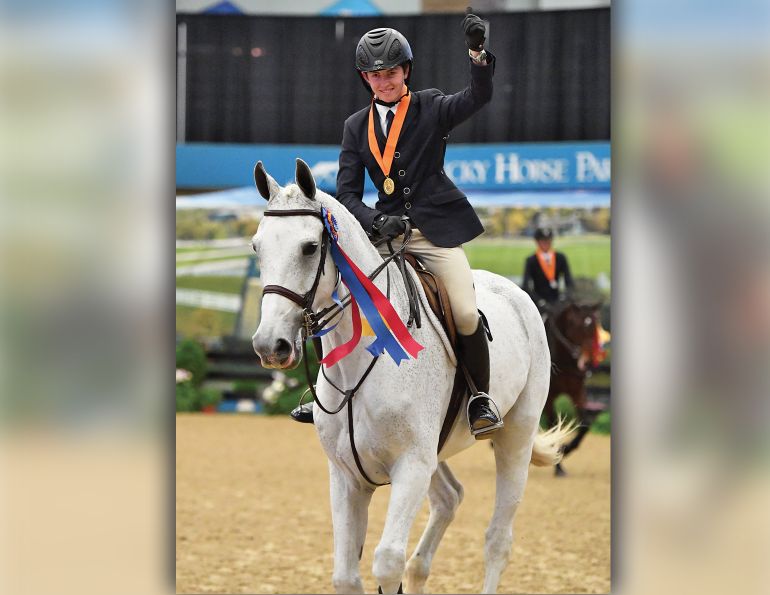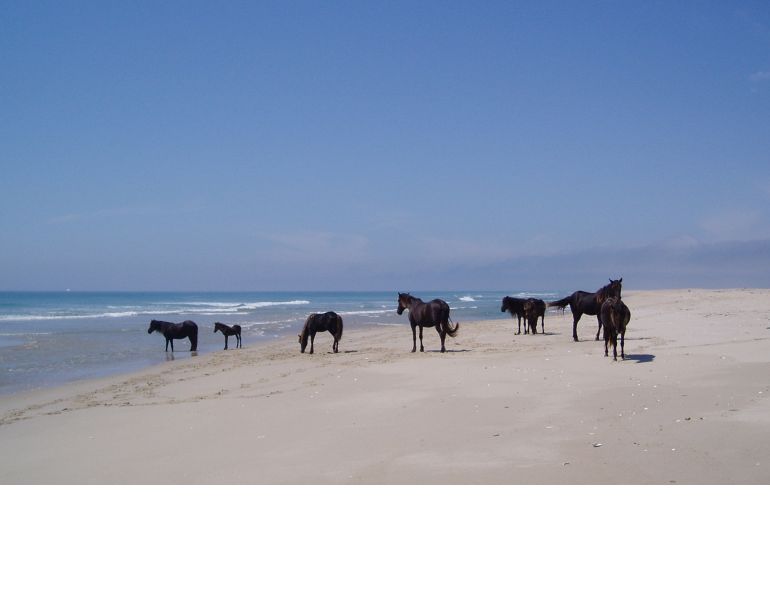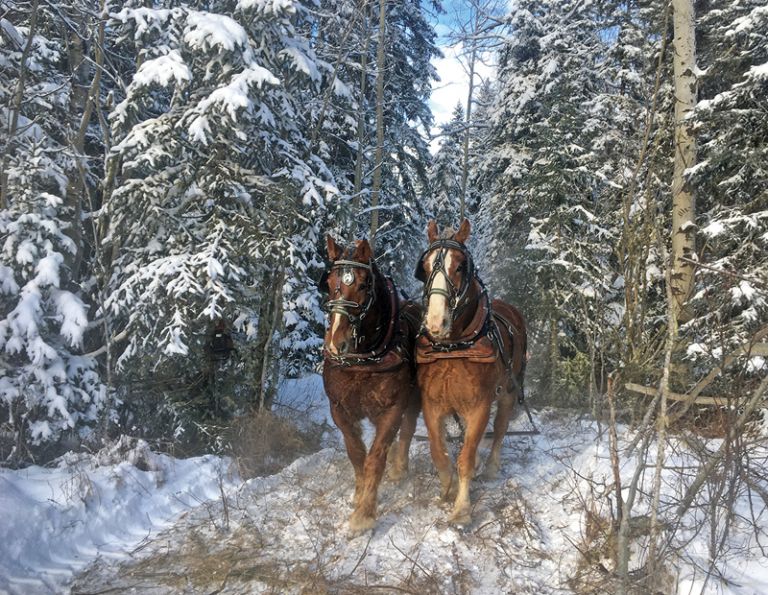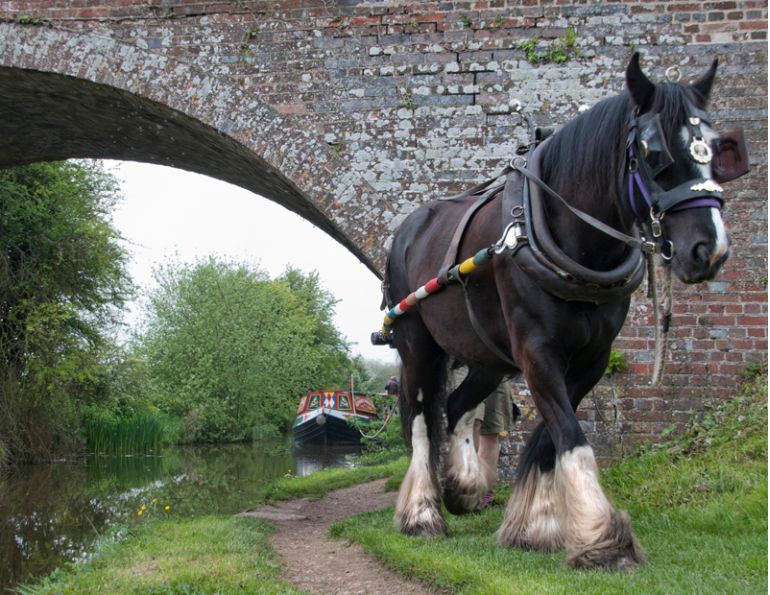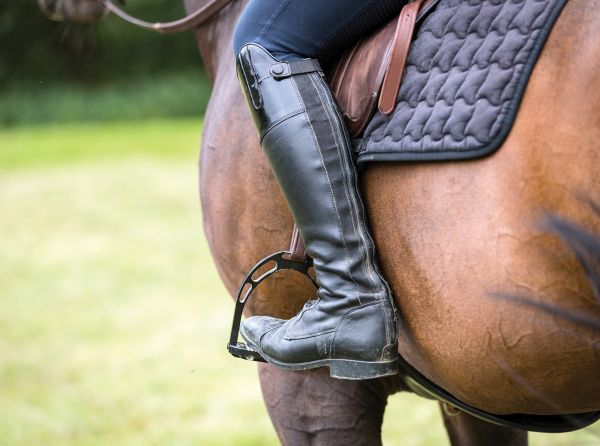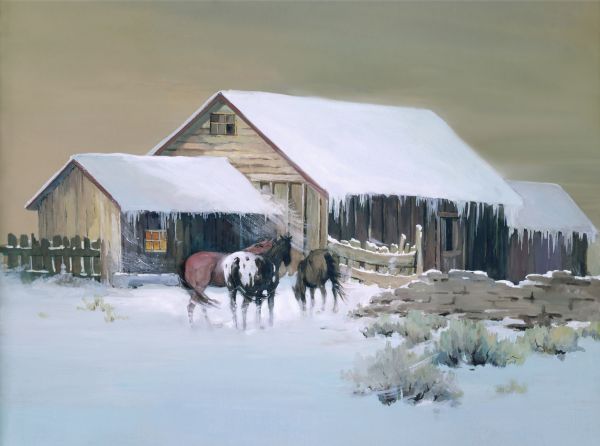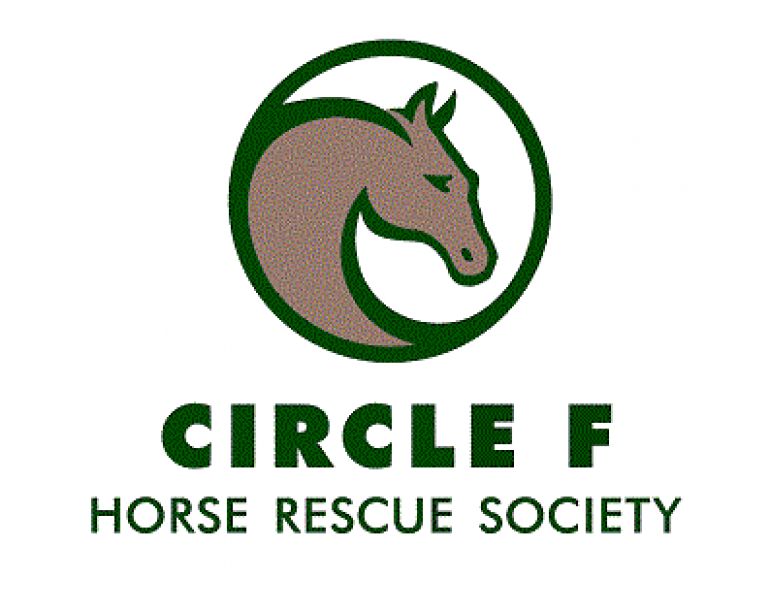Faithful unto Death
By Jess Hallas-Kilcoyne
Galloping into enemy machine gun fire and almost certain death, they led the cavalry charges. Struggling through thick, sometimes belly-deep mud, freezing rain, and shell fire, they hauled heavy artillery. Exhausted and malnourished, they continued to supply the soldiers in the trenches with food, water, and ammunition. Throughout the Great War, horses fought and laboured alongside the soldiers, sharing many of the same hardships and dangers.
“I’m only a cavalry charger,
And I’m dying as fast as I can,
(For my body is riddled with bullets –
They’ve potted both me and my man)."
- Excerpt from “The Cavalry Charger’s Appeal” by Scots Grey, A Book of Poems for The Blue Cross Fund
For nearly a century, the role of the horse in World War I remained largely unrecognized, but the 2011 release of director Steven Spielberg’s film epic War Horse, based on the 1982 Michael Morpurgo novel of the same name, has publicized to an unprecedented degree the contributions of the horse in war.The sacrifice of the ten million men who lost their lives during the conflict, which endured from 1914 to 1918, is well known. Less well known is the price paid by the estimated eight million horses that perished in the Great War, a fact lamented by Private James Robert Johnston, a horse transport driver who served with the 14th Canadian Machine Gun Company, in his memoir, Riding into War: “Very little has been said about the horses and mules that were used and what they suffered is beyond all description.”
“Goodbye, old man; we’ve fought our last together,
You’ve struggled bravely, but you’ve got to die.
Old man, it almost breaks my heart to leave you,
Without one other word, except 'Good-bye.'"
- Excerpt from “Good-bye, Old Man” By Lucy Lawrence, from A Book of Poems for The Blue Cross Fund
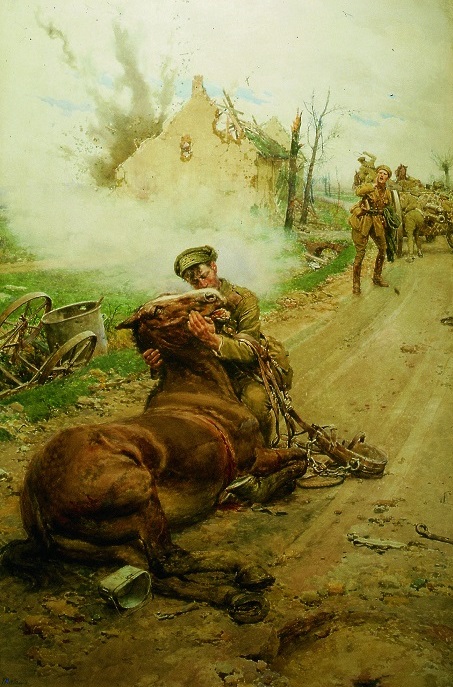
"Man” by artist Fortunio Matania is a powerful illustration of the anguished love of a soldier for his dying horse. This painting was used for fundraising during World War I by the Blue Cross, an animal charity that contributed greatly to improving the welfare of horses serving in the war, and continues to help horses today. Photo courtesy of Blue Cross
The First World War represents the end of an era for the use of horses in armed conflict. It was the last time the horse would ever be used on a mass scale in modern warfare, as well as the last great cavalry charge in history – that of the Canadian Cavalry Brigade at Moreuil Wood – which was also one of the decisive battles in World War I. In short, it was the last time that the horse would play such an instrumental role in shaping the outcome of so devastating a conflict.
With the outbreak of war in July 1914, initially the British government, believing that the war would be of short duration, acquired approximately 100,000 to 150,000 horses from home shores. However, as the war dragged on, the increasing need for more animals prompted the British Remount Department to expand their search to look overseas, importing hundreds of thousands of horses and mules from Canada, the U.S., Australia, and Argentina. They were shipped to Europe, 600 to 800 animals in each transport, a costly enterprise and filled with risk, due to the danger that the ships might be torpedoed by German submarines.
Related: Horses as Healers
The horses that landed safely in Europe were rushed to remount depots where they were trained to perform in a specific capacity based on their type. Heavy draft horses were used to transport the larger guns and heaviest wagons; light drafts and mules supplied the front lines with lighter guns, ammunition, and supplies; and riding horses were reserved for the cavalry and officers. Upon completing their training, the horses were transported to the field where they began active service.
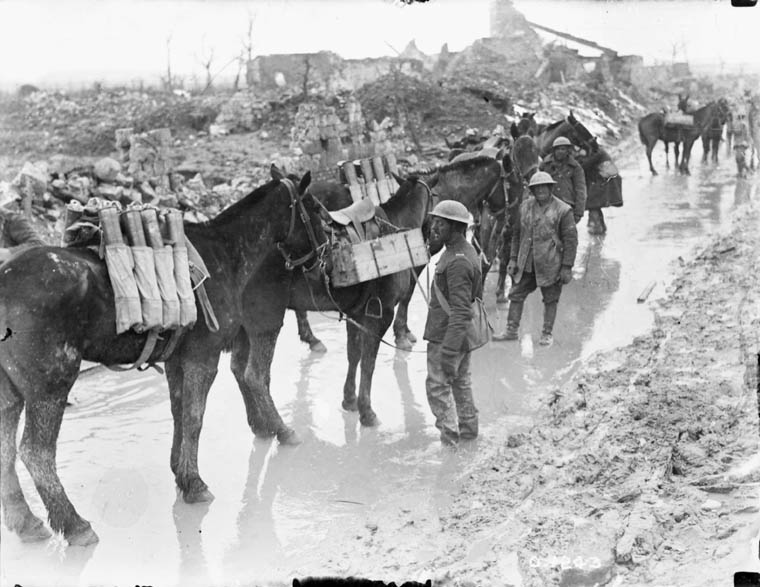
Pack horses carried rations, ammunition, and other supplies from the rear to the soldiers in the trenches on the front lines. Photo: Canada Department of National Defence / Library and Archives Canada / PA-001229
For the horses and mules serving on the Western Front, life was hard and fraught with danger, and thus usually quite short. Shelter (from the elements and from bomb and shell splinters) was provided whenever possible, but such occasions were very rare. Most commonly the animals were picketed in open fields, which exposed them during the winter months to many miseries which are described by Lieut-Colonel David Sobey Tamblyn, a veterinary surgeon who served with the Third Canadian Division, in his book The Horse in War published in 1923. “Nothing more distressing could be witnessed than a concentration of transport animals, during wet seasons, in fields where the mud was over their knees and hocks,” he said. “Horses were wet and cold for months at a time, grooming was out of the question, and where overhead hay-net lines were not brought into use, the hay was trampled into the mud. Under these conditions debilitated horses, which were propped up by the mud, died on their feet.”
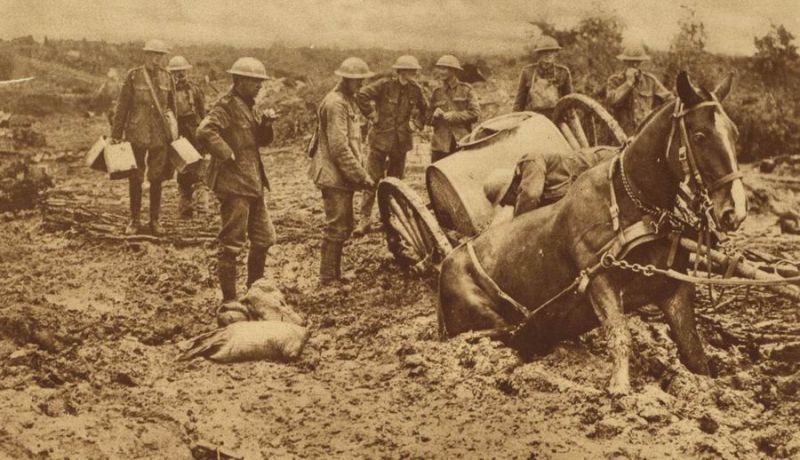
“The terrain over which [the horses] travelled can only be described as a quagmire,” said veterinary surgeon Lieut-Colonel David Sobey Tamblyn. “Horses became mired to such an extent that it was a case of being humane to destroy them, for it was impossible to extricate any horse without riding three or more.” Photos: New York Times Co., 1919; Provided courtesy of Great War Primary Document Archive: Photos of the Great War, www.gwpda.org/photos

The situation was made worse by the mandatory body clipping of the horses by veterinarians as a preventative measure against afflictions such as mange and lice, which were running rampant through the army. Unfortunately, because horse blankets were not always available, this practice resulted in a greater number of horses dying from exposure. Finally, in 1918, clipping was limited to the horses’ legs and stomachs only.
Another major concern facing horse caretakers was the possibility that their charges might starve to death. Feed was incredibly scarce, and Tamblyn wrote of seeing horses choking while trying to eat their blankets and hay nets in an attempt to satisfy their hunger.
Related: Bunny, World War 1 Horse Hero
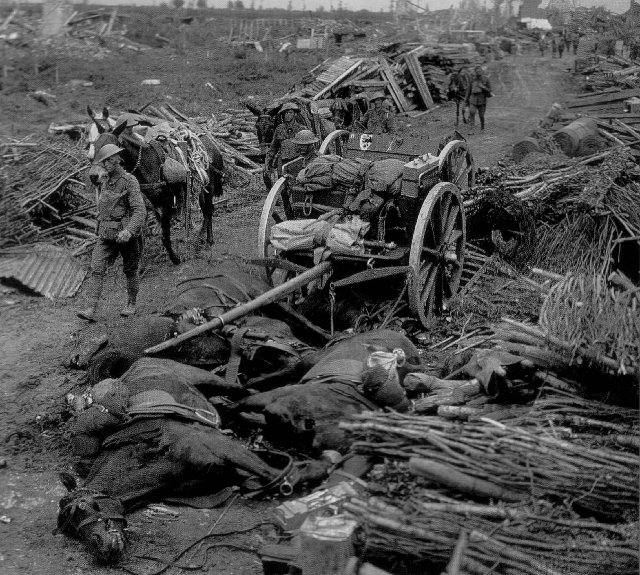
An estimated eight million horses on all sides and on all fronts died during the four years of the First World War. Photo: Library and Archives Canada / PA-207908
Even if a horse escaped dying of starvation, disease, or exposure, the likely possibility that he might fall victim to a bomb, shell, gunfire, or gas attack still remained. Little could be done about the latter; gas masks for the horses were issued but proved so cumbersome to put on that they were rendered largely ineffective. In the end, the only course of action really available to the soldiers was to flee the clouds of gas with their horses as quickly as possible.
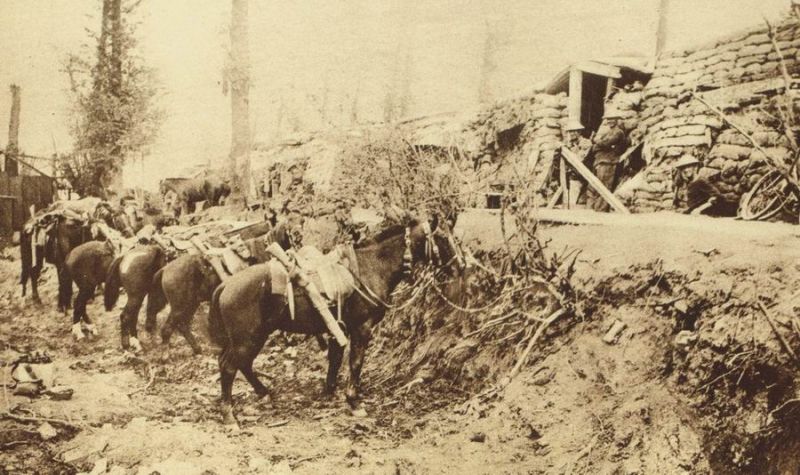
Dugouts constructed out of timber, sandbags, and earth helped protect the soldiers and horses from bomb and shell splinters. Photo: National Library of Scotland
For the most part, men were similarly helpless when it came to protecting the horses against shell fire. Tamblyn recalled a young Canadian bugler who persevered in his efforts to cover some transport horses with earth as a makeshift dugout to protect them against bomb and shell splinters before digging himself a small hole in the ground. The next morning Tamblyn passed by the same place and saw that the bugler had been killed by a bomb in the night, “while the horses he had helped to protect escaped injury, due in a great measure to his manly labor the previous night. It seemed to me that this lad’s first thoughts were for the horses, a spirit which is bred in men who love animals.”
It wasn’t just the bombs and shells themselves that could kill or maim horses and men. The craters these left in the ground, combined with the ever present mud, presented a danger of their own. Johnston described the footing at Passchendaele, France, as “one continual series of shell holes filled with water, and to slip into one of them was quite serious. In the first place a lot of them were so big a man and horse would be drowned if he slid into one of them.” Men and horses alike succumbed to this grisly end more often than might be thought.
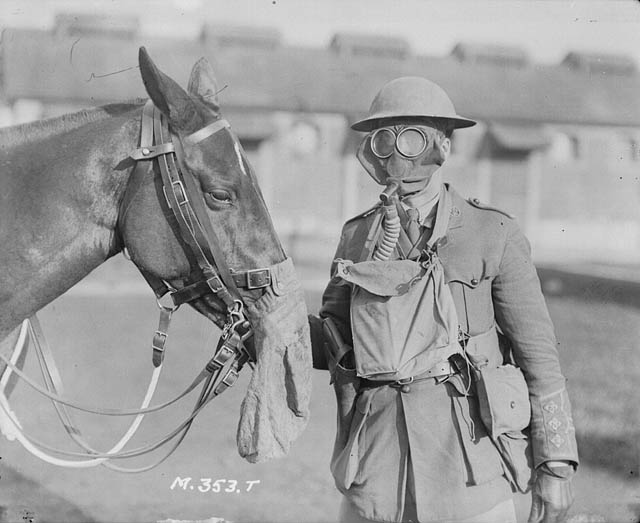
The gas masks designed for the horses were largely ineffective; the time it took a soldier to correctly fit a cumbersome mask to his horse was much better spent herding the animal away from the cloud of poison gas. Photo: Canada Department of National Defence / Library and Archives Canada / PA-005001
Major Williams, an officer with the Canadian Army, witnessed one such occasion on which a mule carrying ammunition slipped into a shell hole and sank out of sight. “Before ropes could be passed around him, to assist in extricating him from his terrible predicament, it was realized that relief was impossible, so a kindly bullet ended his troubles just before his head went below the sticky surface.”
For General Jack Seely, British Commander from 1915 to 1918 of the three regiments that composed the Canadian Cavalry Brigade, the shell holes and muck at Passchendaele almost meant the end of his beloved charger, Warrior. “There were many dead horses lying about which had foundered in the mud, and could not be extricated,” he described in his book My Horse Warrior. “All of a sudden Warrior went deep into the mud up to his belly.” With the help of three other men, Seely was able to help Warrior reach solid ground, but he deemed the event “a narrow escape.”
Related: Forged in Fire - When Horses Answered the Alarm

Horses injured in battle were removed from the field by veterinary ambulances and rushed to veterinary base hospitals. Photo courtesy of Blue Cross Pet Charity
Warrior proved himself to be most aptly named on many occasions, most notably at Moreuil Wood on March 30, 1918, when he and Seely led the great cavalry charge against the machine guns and superior numbers of a German offensive. The Canadian cavalry – both men and horses – suffered terrible losses, but ultimately they took Moreuil Wood and the German advance was halted.
Seely’s description of his horse’s bravery during the charge is quite incredible: “He was determined to go forward and with a great leap started off. All sensation of fear had vanished from him as he galloped on at racing speed. There was a hail of bullets from the enemy as we crossed the intervening space and mounted the hill, but Warrior cared for nothing.”
Similar tales of the bravery of war horses are widespread, although the fear they must have felt is unimaginable.
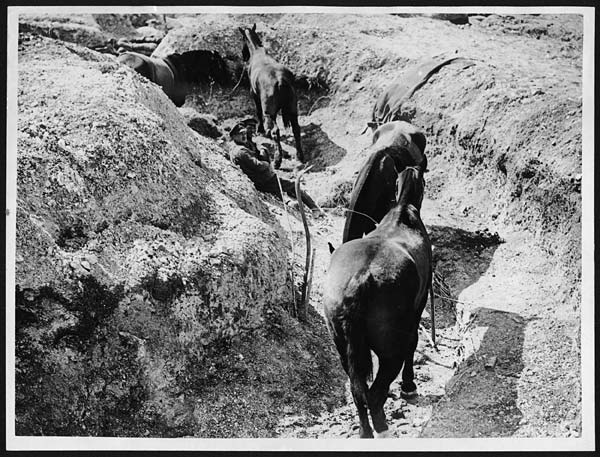
Horses on the Western Front often sheltered in the trenches alongside the soldiers. Photo: National Library of Scotland
The trust the horses showed in the men was justified by the extraordinary lengths taken by many of the soldiers to ensure the safety and well-being of their four-legged charges.
“A story is told by a gunner of the Royal Horse Artillery of a man who gave his life for a horse,” wrote Tamblyn. “In one of the desperate attacks along the Aisne, a party of ours was nearly cut off, and had to retreat in hot haste. As we cleared out, there was a man of the Gloucestershires who noticed that a horse which had been struck by a shell was in great pain, and was neighing piteously for water. There was none about, and with the Germans closing in, it was as much as a man’s life was worth to stay another minute. This brave chap knew this as well as anyone, but he wanted to make the poor animal comfortable before he cleared off, so he hunted around until he found water. We had to retire, and did not know what happened to him until the next day, when we re-took the position and found the Gloucester lad and the horse both dead.”
The dedication of the men to the horses was an expression of the great faith they had in their animals. “I believe my saddle horse knew more than I did, and it is one of the reasons why I lasted as long as I did,” said Johnston. “He took care of me.” And Johnston was certainly not alone in his sentiments. Many, many soldiers of the First World War expressed immense gratitude for the so many horses and mules that gave so much in return for so little.
It might be wished that the million or so horses and mules listed in service to the British and Commonwealth forces at the end of the war in November 1918 had returned home to live out their days in green fields. Alas, this was very rare. Many of the animals were auctioned off locally, and tens of thousands were sold to the Belgian government for meat, a sorry reward for such loyal and devoted service which seems best captured by the inscription on a memorial at St. Jude on the Hill in Hampstead, England, erected in honour of the horses killed during the First World War: “Most obediently and often most painfully they died – faithful unto death.”
Related: The Ride Across Canada
Related: War Horse
Dumb Heroes
- Excerpt from “Dumb Heroes” By T.A. Girling, Captain, Canadian Army Veterinary Corps, from A Book of Poems for The Blue Cross Fund
They are shelling on Hell Fire Corner,
There’s shrapnel just burst in the Square,
And their bullets drum as the transports come
With the food for the soldiers there.
The halt till the shelling is over,
The rush through the line of fire,
The glowing light in the dead of night,
And the terrible sights in the mire.
It’s the daily work of the horses
And they answer the spur and rein,
With quickened breath, ‘mid the toll of death,
Through the mud, and the holes, and rain.
There’s a fresh treated wound in the chestnut,
The black mare’s neck has a mark,
The brown mule’s new mate won’t keep the same gait
As the one killed last night in the dark.
And they walk with the spirit of heroes,
They care not for medals or cross,
But for duty alone, into perils unknown,
They go, never counting their loss.
There’s a swift painless death for the hopeless,
With a grave in a shell-hole or field,
There’s a hospital base for the casualty case,
And a Vet for those easily healed.
Main Photo: Men and horses living together on the front shared many of the same hardships and dangers, trials which strengthened the camaraderie between them. This officer and his horse were photographed while quietly resting together. Photo courtesy of Blue Cross Pet Charity



